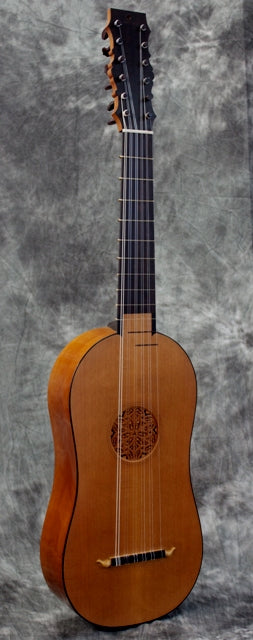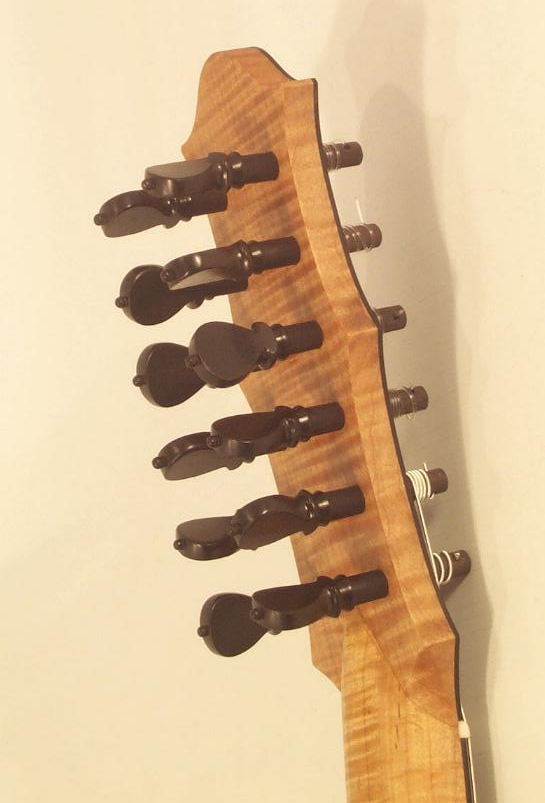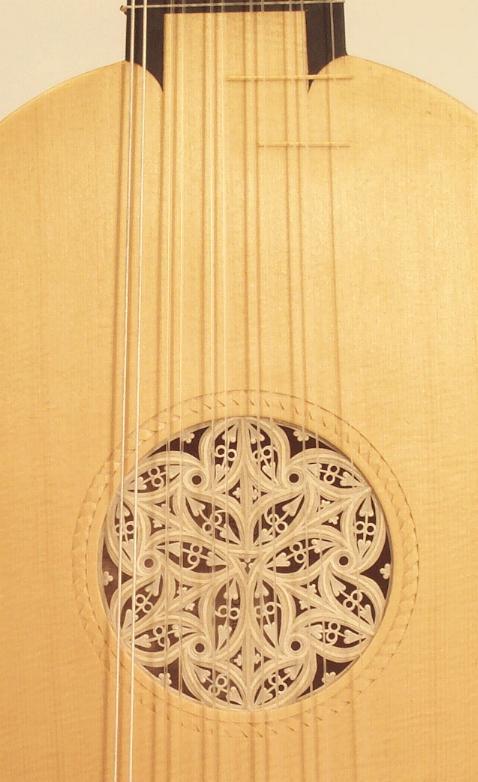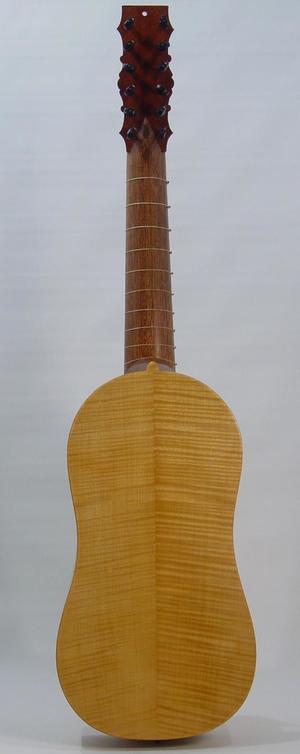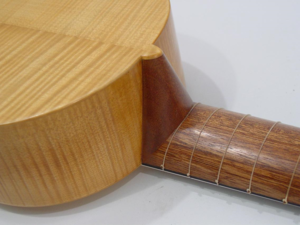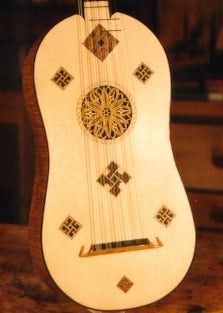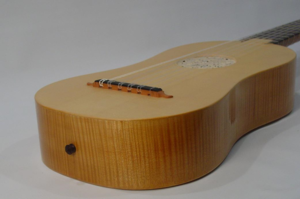Description
This instrument has been SOLD.
#
In the 16th century the Spanish musicians developed a unique form of instrument for playing polyphonic music. This was a six-course waisted instrument played with a bow, a quill, or the fingers. The form that seems to have been most popular, or at least the form that suits the surviving music, is the vihuela intended to be played with the fingers. No instrument survives from the period that characterizes the instrument as we see it in paintings and drawings.
I have chosen to base the design of my reconstruction on paintings and illustrations of vihuelas of the 16th century. Some constructional details have been adapted from the few surviving vihuelas as well as consideration of early Spanish and Italian guitars.
Our version of the Spanish vihuela has six double-courses, (the first course is most commonly strung with a single string these days), with a figured maple back and sides and a mahogany neck and head. The front is a AAA Engelmann spruce that is at least twelve years old with a three layer wooden inset rose. The fingerboard and head-plate are ebony.
Instrument Specifications:
- String Length: 59.5cm
- Six Double Courses
- Front: AAA Englemann Spruce
- Back: Maple
- Sides: Maple
- Head: Maple
- Neck: Maple
- Pegs: Ebony
- Fingerboard: Ebony with Points
- Inset Three Layer Cherry Rosette
- Nylon and Fluorocarbon Strings with Wound G-6 String
|

